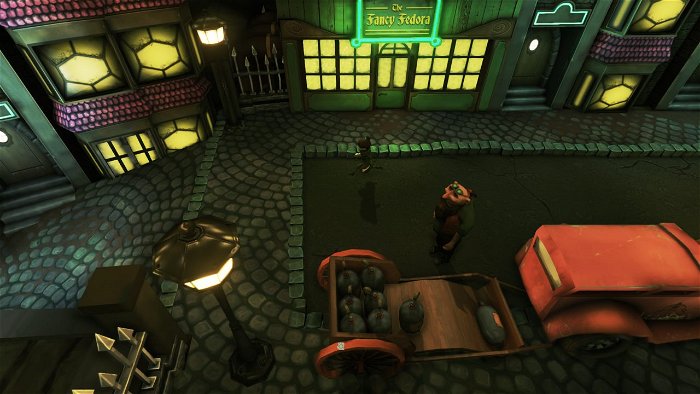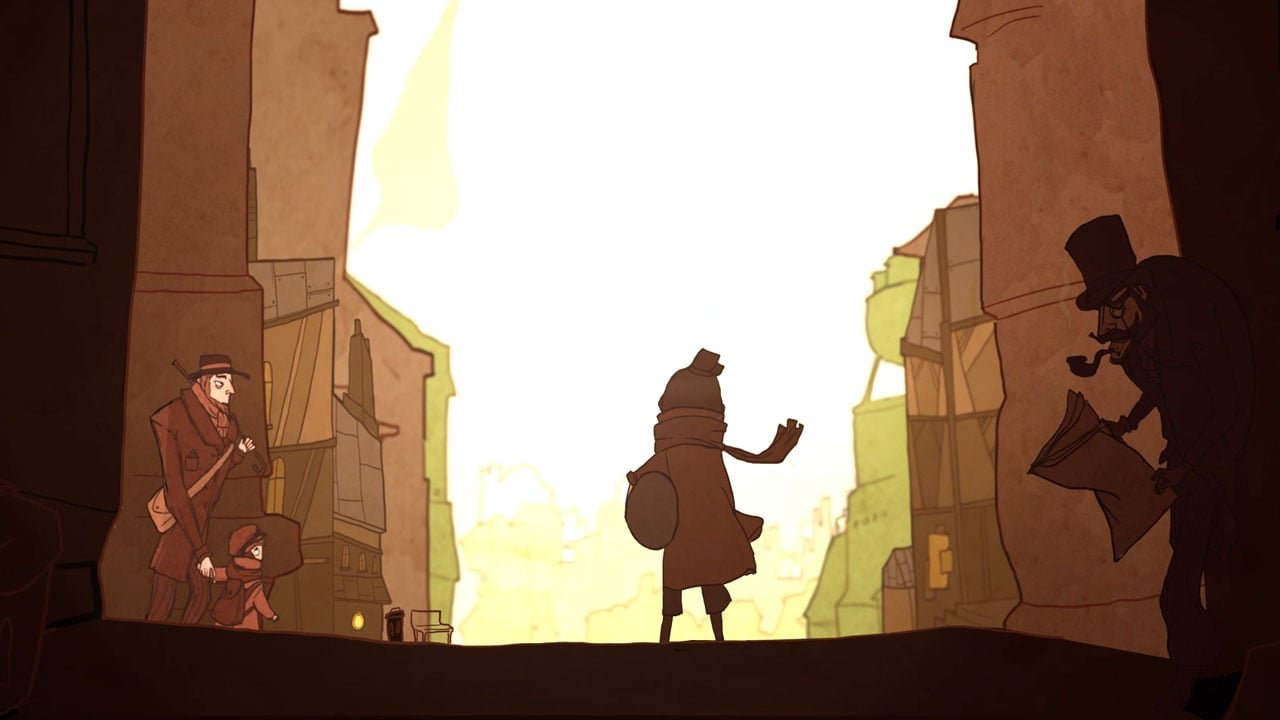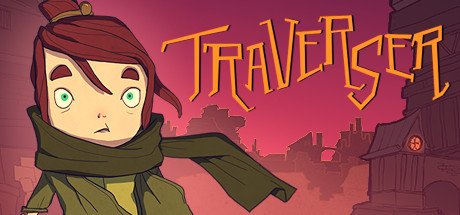Valerie Bennett, the hero of Gatling Goat Studios’ Traverser, lives in the underground city of Brimstone. Her home, the wealthy district, is a place where the streets are cobblestoned, the sun never shines, and the women and men wear elaborate dresses, fancy hats, and tailcoats. The surface of the Earth has frozen over and the remaining population seem to have reverted to the industrial age: the oxygen supply is rationed by the Orwellian Raven Corporation and a small group of rebels work together to strike back at the unjust rulers who (quite literally) control the source of life.
This premise—and the style in which it’s presented—is the most successful part of Traverser. It’s an excellent children’s story that makes an accessible fable out of real 19th century history and the rise of European socialism. Unfortunately, the gameplay that works to deliver the narrative isn’t executed nearly as well.

At the beginning of the game, Val passes a test to become a “traverser:” an agent of the Raven Corporation who uses a gravity-manipulating glove to move between Brimstone’s aristocratic upper city and oxygen-starved blue-collar lower districts. As Val finds herself drawn into the struggle between the rebels and Raven Corp.’s authoritarian forces, the player navigates the city, sneaking past guards and overcoming environmental obstacles by using the glove’s powers. A button press grabs a nearby object—typically wooden boxes or tin barrels—and rotates or changes its height by moving the mouse around. In order to quietly enter a cordoned-off area, smash through a wall, or, in a few cases, fight off monsters and robots, Valerie uses a combination of carefully timed jumps and physics-based puzzle-solving.
Traverser’s central mechanic initially seems like an interesting wrinkle to introduce to the stealth and platforming genres the game cribs from, but the problem is that it quickly becomes apparent that the action is simply too clumsy to ever be satisfying. Val and the objects she manipulates with her gravity glove have no real feeling of weight, the protagonist not jumping so much as floating through the air and objects only barely feeling as if they’re in the player’s control.


Worse than this are the technical problems that mar the game. Val—and the objects she moves around—often stick to surface or fall right through them, making platform jumping and spatial puzzles more frustrating than they should be. Areas requiring stealth fare no better. Guards sometimes spot Val through a closed door, clump up together so they get stuck in place while searching an area, or switch out of their alarmed state with the player still directly in sight. The checkpoints in these sections are so unevenly spaced out that a single misstep (or programming misfire) can set the player back 10 or 15 minutes, which is tough to swallow when the enemy’s ability to detect Val is so hit-and-miss.
Traverser’s visual design is similarly uneven. While the few hand-drawn cutscenes and in-game posters have a great style—quick, sketchy lines and bold colours that contrast with the intentionally drab setting—most of the environments and character models are muddily 3D, only occasionally taking advantage of the cartoon aesthetic to assert any real sense of personality.

The mood of the game is only properly established through Traverser’s eccentric, melancholy soundtrack. Tracks with swelling strings inspire a sense of heroism to Val’s quest while others, their melodies carried by acoustic bass plucking, complement stealth sections and rebellion errand-running. Mostly, though, the game has a hard time bringing its various elements together into a coherent whole. The music and story may be solid, but the visuals and gameplay are too unevenly executed.
There’s the outline of a great game here—one whose aesthetic would likely attract audiences young and old—but it only ever appears in glimpses. Traverser’s creative premise is worth celebrating, it’s just unfortunate that actually playing the game makes this so hard to see.





